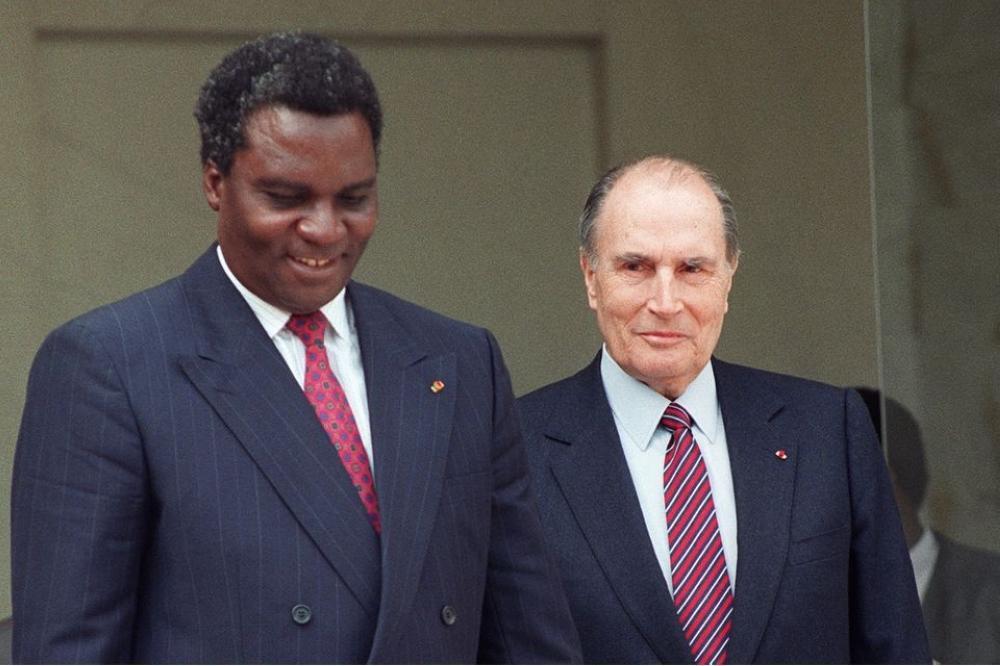Peter Ruti
Africa-Press – Rwanda. In the last article in this serialised narrative, we saw how, at the beginning of the liberation struggle, President Habyarimana requested France to help a French-speaking country that had been attacked by English-speaking feudalists supported by a foreign country.
This was part of generalised disinformation about the RPF struggle. This article and those coming after it will give insight into the real cause of RPF struggle and what transpired till the end of the struggle.
Evolution of the war
In the military field, the death of Gen Fred Rwigema on the second day of the war disorganised a lot of things. The reorganisation of the high command and the whole army with the arrival of President Paul Kagame, as well as the transition from conventional to guerrilla warfare and the creation of new fronts, especially with the opening of a front in the volcanic mountains, gave new impetus to the RPA.
Rwigema’s death was followed, three weeks later, by that of Major Peter Bayingana and Chris Bunyenyezi. This was very often considered, especially by the Kigali regime and its allies, as a consequence of infighting within the RPF. However, that was not the case.
The situation of RPA forces permitted the Rwandan army, with the help of Zairean contingents and the support of Belgian and French troops, to score military successes in such a way that the Kigali regime celebrated the end of the war throughout the country.
Everywhere, Rwigema “the enemy” of Rwanda, was “buried” in jubilant simulations of a funeral — banana trees or imibyare were buried in simulation of the supposed burial of the fallen General. The Kigali regime and its allies talked of the October war as a conflict that was over by then.
The RPA reorg
The RPA reorganised and resumed the war. It carried out a series of successful raids, some of which, like the capture of Ruhengeri prison, were very daring and spectacular. Drawing lessons from the crisis after the death of Rwigema, the RPA high command began very serious coordination missions between civilians and the military.
The movement opened administrative structures, especially for the business community and intellectuals who had specific contributions that the movement needed. It strengthened the political schools, organised visits to the front, and improved communication by regularly diffusing news from the front.
Here, Radio Muhabura played an important role by broadcasting the RPF programme. The radio also counteracted the disinformation of the Rwandan press, both government and private, and international press that was favourable to the government.
Finally, the RPF reorganised all its structures to respond efficiently to the needs of the movement during the war. To cope with negative reactions perpetrated all over the world, RPF deployed intensive diplomatic activity, especially in Africa and the West.
In Kampala, those who wanted to visit the high command on the front were allowed to do so. Brussels and New York also played a major role in broadcasting the war. Finally, in addition to its emissaries who were punctually deployed in different parts of the world, RPF utilized its structures which were created in the entire world after the beginning of the war.
The Western allies of President Habyarimana finally convinced him that it was necessary to look for a solution to his country’s crisis from Rwanda’s geographical environment. The Belgium Troika made of the Prime Minister, the Foreign Affairs Minister and the Defense Minister particularly insisted on the fact that it was incumbent on Rwanda to find a solution to the crisis.
For long, President Habyarimana refused to meet the RPF and several conferences were held without allowing the RPF to participate. Moreover, many of those conferences essentially discussed the question of refugees. In the political programme of the RPF, this question was considered as a point among many.
In the conferences held in Mwanza (October 17,1990), Gbadolite (October 26, 1990), Zanzibar, (February 17, 1991) and Dares-salaam (February 19, 1991), the question of refugees was high on the agenda.
Despite the status accorded to RPF during those meetings, none of these bore its signature. RPF responded to all invitations addressed to it. It wanted to show its goodwill and take advantage of such occasions to explain its positions because several delegations asked for the RPF’s point of view.
The N’sélé agreement concluded in Zaire on March 29, 1991 was the first agreement signed between the Rwandan government and the RPF. However, two facts ought to be pointed out here: The two Rwandan protagonists never sat together to discuss the terms of that agreement, and the agreement remained worthless and both sides accused each other of violating the ceasefire.
According to declarations that were broadcast notably by the Rwandan Minister of Foreign Affairs on his return to Kigali, the Nsele Accord was somehow considered an act of the RPF’s surrender.
Source: The New Times
For More News And Analysis About Rwanda Follow Africa-Press






